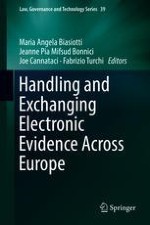2018 | OriginalPaper | Chapter
10. The Conceptual Representation of the “Electronic Evidence” Domain
Authors : Sveva Avveduto, Sara Conti, Daniela Luzi, Lucio Pisacane
Published in: Handling and Exchanging Electronic Evidence Across Europe
Publisher: Springer International Publishing
Activate our intelligent search to find suitable subject content or patents.
Select sections of text to find matching patents with Artificial Intelligence. powered by
Select sections of text to find additional relevant content using AI-assisted search. powered by
